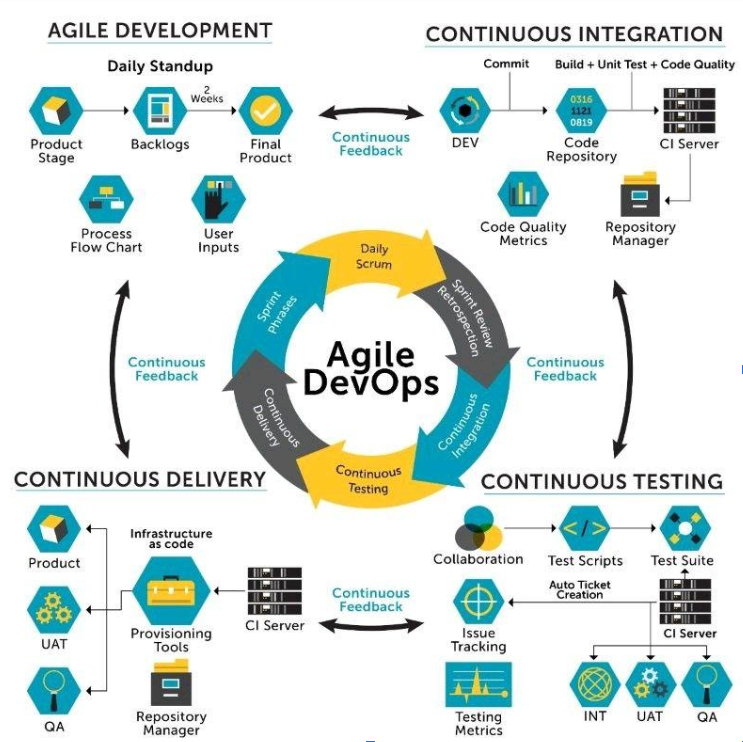‘DevOps’ and ‘Agile’ have been popular buzzwords in the tech industry for quite a while now.
For many people, these terms are still shrouded in mystery. However, once you understand what they are, it’s easy to understand why they have become so popular.
Over the past few years, in particular, we have witnessed a drastic shift away from traditional, ‘heavyweight’ approaches such as waterfall, towards newer approaches that tackle projects by breaking them down into smaller, more manageable steps.
By now, most IT firms have incorporated some form of Agile or DevOps practices into their teams. But how can they increase efficiency?
The Waterfall methodology
Before Agile and DevOps, there was the Waterfall methodology.
This was first introduced back in the 1970s. It is comprised of six main stages: requirements, analysis, design, coding, testing, and operations. In its time, it was successful.
However, in recent years it has witnessed a slow phasing out in favor of more modern methods, such as Agile and DevOps.
The Waterfall methodology has several major disadvantages that led to its demise. For instance:
- If a flaw is found in the design mid-way through, a dramatic leap backward to previous stages in the process is required.
- The process doesn’t allow user feedback to be gathered until the end. This can be both costly and time-consuming if developers need to go back to previous stages and make changes.
- The testing period is delayed, which means that bugs and issues won’t be found until the end of the process. Leaving testing as an afterthought also encourages bad coding practices.
The creation of Agile development aimed to solve these issues.

What is Agile development?
The Agile development approach was officially brought about in 2001, following the creation of the Manifesto for Agile Software Development.
Unlike the Waterfall approach, which works towards creating a ‘finished product’, the Agile approach embraces the idea that the process of software development should be iterative and incremental.
Ultimately, the process is comprised of three key principles: people over processes and tools, working software over comprehensive documentation, and embracing change and flexibility over following a fixed plan.
Each new release aims to produce a functional piece of software that can be used by the customer in order to gather feedback. Each release aims to respond to this feedback in order to improve the software.
What is DevOps?
Development Operations, also known as DevOps, is often confused with Agile, but they aren’t the same thing. However, they are often used in tandem.
Ultimately, DevOps is the process of developing and deploying new products to the customer.
It is not based on fixed methodologies, but rather on a number of core principles that teams should aim to follow: culture, measurement, automation, and sharing.
How do Agile and DevOps work together?
Both Agile and DevOps teams rely heavily on concepts such as test automation, continuous integration, continuous deployment, and continuous delivery.
It wasn’t long after the introduction of the Agile methodology that teams began to notice the benefits and made the switch. However, it was still far from perfect.
Despite the success of the Agile methodology, it turned out that missed deadlines due to lack of communication, and even incompatible software components that resulted from separate scrums working in isolation, were common issues.
To solve this, the concept of DevOps was introduced. This methodology added another person to the Agile team, designed to simplify the transition from software to deployment.
Ultimately, this helps to improve the communication between all team members by increasing the transparency across different teams.
To put it simply: while Agile focuses mostly on the development of software, DevOps focuses on deploying this software.
Using methodologies to streamline the software development process
When it comes down to it, the primary purpose of these methodologies is to streamline the software development process and make it more efficient.
While Agile and DevOps can be used successfully on their own, the best results are achieved when they are used in conjunction with other streamlining tools.








